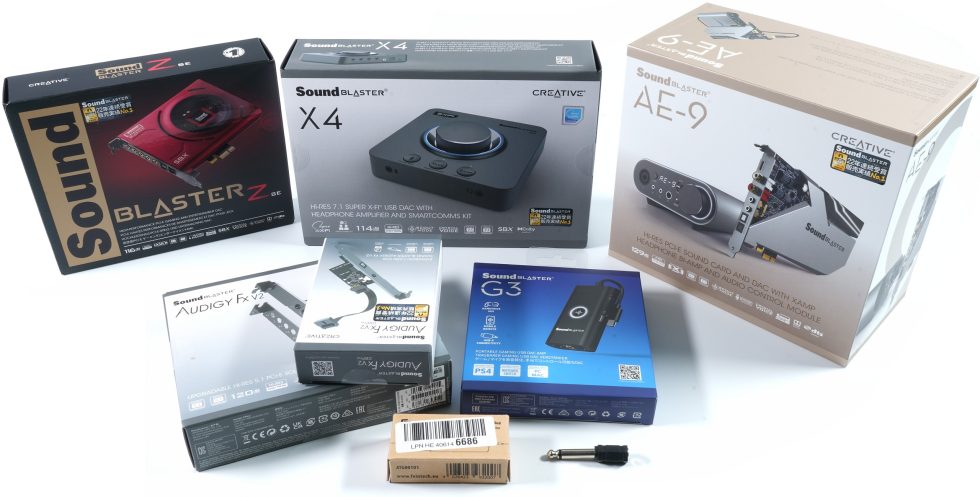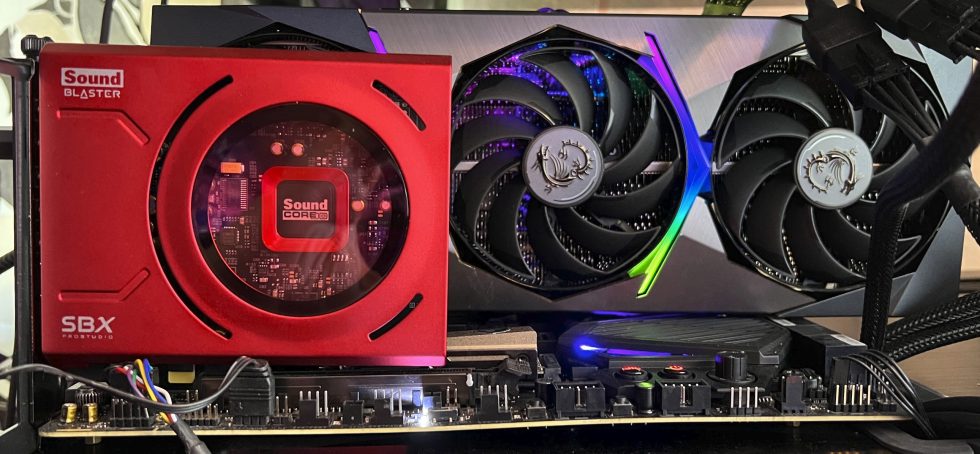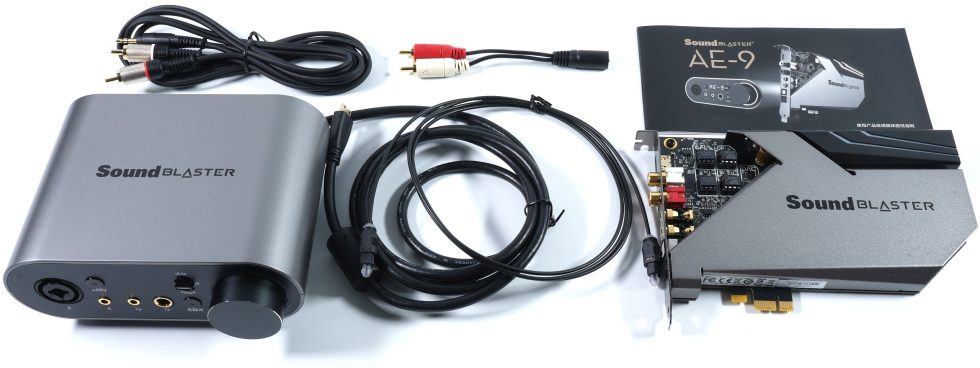Summary
The manufacturers of motherboards can only be encouraged to finally use real shielding, especially on the way from the slot panel to the part of the board where the actual technology is located. Simple traces are cheap, but that’s also how they sounds. No matter if you later install capacitors with gold or platinum and a really good DAC. Once something is ruined, even the best packaging can’t save it. The MSI MEG X570 Godlike comes with 3 sound chips and has to admit defeat to the tested economy devices, especially in terms of punch and the external voltage gap.
The statement has not changed: If the chirping of the graphics card is annoying, there is no way around an extra sound solution. This pleases the industry and the retailer, only the customer bleeds twice. First the expensive motherboard and then the balm for the ears. But if there’s one thing we’ve learned today, it’s that even less than 100 Euros is enough to get you back on your high horse acoustically. Sure, it’s still not real high-end for audiophiles, but that’s a completely different story and enough material for a second part, where exactly that will be in the foreground. Feedback is welcome and I also wrote something about Linux. So just get in touch.
Assessment of external and internal sound solutions
However, the somewhat random compilation from the Creative portfolio proves once again that any other solution is the better one. It doesn’t matter whether the external or internal solutions come from Creative, Asus or elsewhere. It’s also interesting that the internal PCIe sound solutions, which have so often been declared dead, know how to elegantly beat themselves. And yes, with the very small products is already somewhat cut. You can get along with the internal Audigy FX V2 as a beginner if you want to spruce up old systems before the big conversion is due, or if TOSLINK is missing. This works fine. More sound pressure? Yeah…
The 30-euro Sound Blaster G3 DAC will certainly find its one-handed friends as well, but only on laptops and smartphones, or even on consoles for my sake. You will probably not enjoy music seriously with both cheap solutions. It lacks punch (especially the G3), depth and resolution, but it’s also due to the price. The artificial braking of the G3 annoyed me a bit, but a mobile DAC like this is practical, no question, and still a lot better than what is usually installed in such mobile devices.
Which brings us to the comparison of the two mid-range solutions. The Sound Blaster Z SE is actually the smarter Sound Blaster AE-5, especially since you can do without an extra power connector. Purely limited to the sound, this internal card is the better choice for currently not even 90 Euros. However, the Sound Blaster X4 is the better alternative for gamers and you can also take it with you and repack it from time to time. The downer is the somewhat overpowered output stage in the low impedance range and the fact that the SB Command software does not recognize the X4. But that’s also complaining at a high level.
I’ll have another measurement on the Sound Blaster AE-9 pictured shortly, which will now accompany my headphone and microphone tests, but would completely exceed the price range today. Also this article about the measuring station will be updated and available as a transparent disclosure of my measuring and testing methods in the near future.
I will of course also continue this guide here, as it has been around since 2018 and in ever-adapted versions. Four years is a long time, even for graphics cards. But already in autumn the new energetic horror will await us. Have fun with it then, I’ll stay tuned of course.
- 1 - Introduction and Overview
- 2 - Humming and other unwanted "sound"
- 3 - Noise and jitter on the external USB DAC
- 4 - Graphics cards and intermodulation
- 5 - Onboard: Realtek ALC1220 vs. Realtek ALC1200
- 6 - Onboard: Realtek ALC4080 and ALC4082
- 7 - Datasheets: Realtek ALC1200, ALC 1220 and ALC 4080/ALC4082
- 8 - RMS voltage, output power and sound level
- 9 - Intern: Creative Sound Blaster Audigy FX V2 (Entry Level)
- 10 - Intern: Creative Sound Blaster Z SE (Mid-Class)
- 11 - Extern: Creative Sound Blaster G3 (Entry Level)
- 12 - Extern: Creative Sound Blaster X4 (Mid-Class)
- 13 - Summary and Conclusion





































199 Antworten
Kommentar
Lade neue Kommentare
Mitglied
1
Urgestein
Veteran
1
Veteran
1
Urgestein
1
Veteran
1
Urgestein
1
Urgestein
Urgestein
Urgestein
Urgestein
Urgestein
1
Alle Kommentare lesen unter igor´sLAB Community →